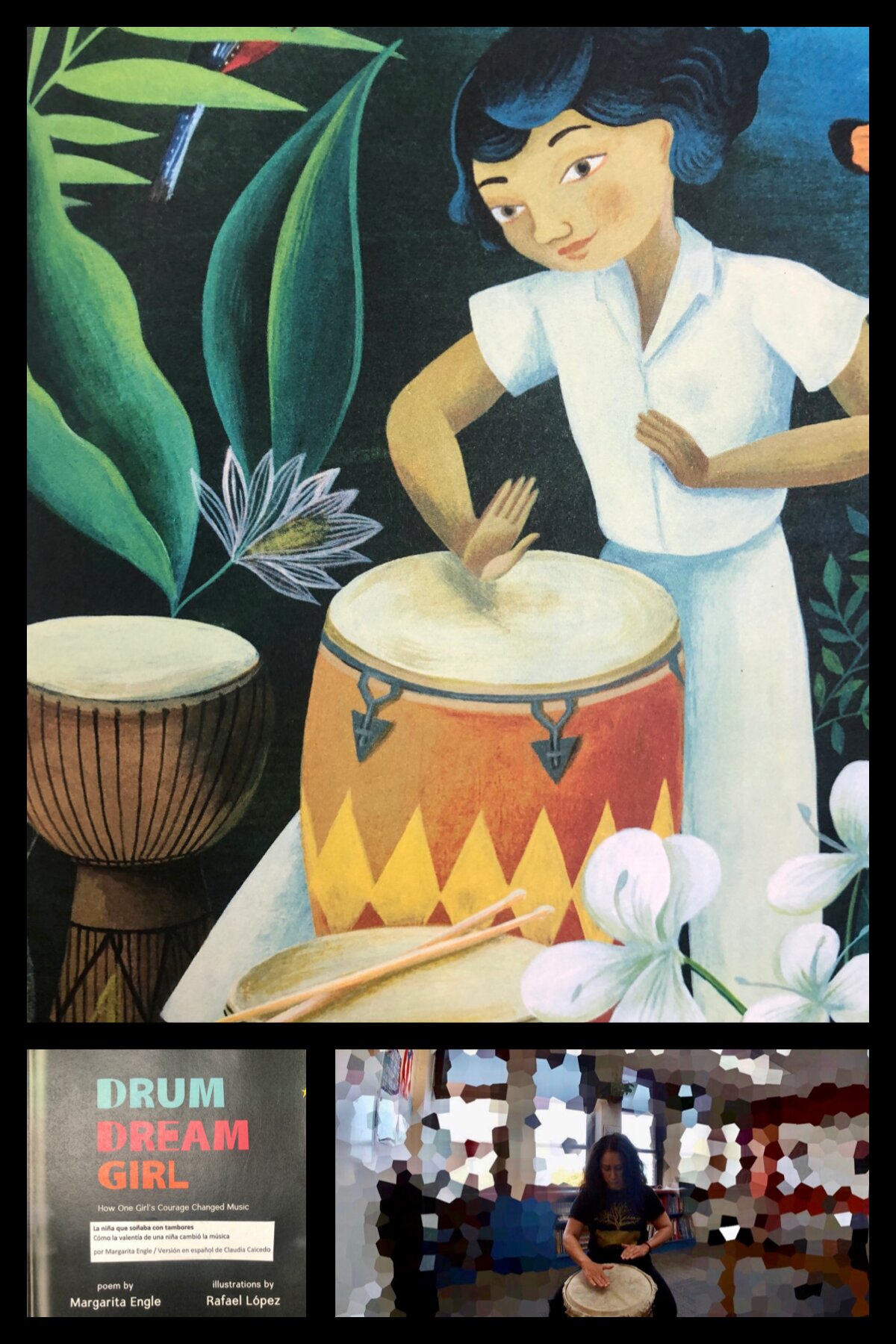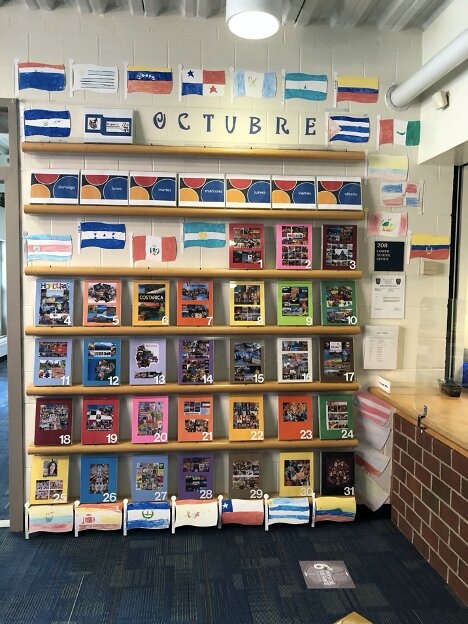
This year, Señora García-Levitas’s first and second grade students began the exciting journey of learning the Spanish language and facets of Hispanic culture. Students are learning to use language in meaningful ways by utilizing high-frequency vocabulary. Among the skills that students are mastering are greeting, saying goodbye, introducing themselves, counting, spelling in Spanish, pronouncing the Spanish alphabet while depicting the letters in sign language, stating the date, illustrating objects using color, learning Spanish songs, and practicing Zumba dance routines. To celebrate Hispanic Heritage Month, from September 15th to October 15th, students learned about the twenty-one countries on four continents that have declared Spanish as their official language. Throughout the year, students will learn about the customs and cultural traditions of many of these Spanish-speaking countries. The first and second grade students created flags for each of the twenty-one countries, and Señora García-Levitas incorporated their flags into the October calendar display in the Lower School, honoring Hispanic Heritage Month. Students also learned about how some Hispanic American children feel about their heritage and what makes them proud of it. The first and second grade students are doing a wonderful job thus far and are off to a great start to the school year.
In fourth and fifth grade classes of Spanish with Doctora Collado, the school year started exploring the Spanish speaking world through music. Whether we are experienced musicians or taking music lessons is part of our hopes and dreams, we are making connections through the beat of drums and the story of Millo Castro Zaldarriaga. Known as the first woman in Cuba to play the drums in public at the age of ten about a century ago, Millo is sparking conversations about social justice and equity in the classroom. In the process, students are also developing a foundation in reading and listening comprehension skills, building their Spanish vocabulary, conversing about the information shared in class, as well as learning ancestral musical traditions such as Puerto Rican Bomba. To meet the diverse proficiency needs of students the learning experience was differentiated. The book “La Niña Que Soñaba con Tambores” by Claudia Caicedo (originally Drum Dream Girl by Margarita Engle) is a poem fourth graders are currently working on. Fifth graders just finished the short story “Millo Castro Zaldarriaga – Percusionista” that is part of the book series “Cuentos de Buenas Noches para Niñas Rebeldes” (Good Night Stories for Rebel Girls) by Elena Favilli and Frances Cavallo. It is our goal in Spanish to have a year filled with good learning where we share those stories that connect us as humans and bring us joy.

